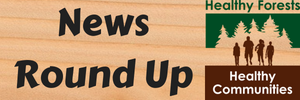Catastrophic wildfires over the past years are devastating the American landscape and the socioeconomic infrastructure. Landscapes left behind catastrophic wildfires resemble war zones with death and destruction all around. The 2020 California wildfire season is wreaking havoc on the already desperate California economy; and this may just be the beginning of the season.
Greenhouse Gases From Wildfires Adding To Climate Issues
Billions of tons of toxic greenhouse gases are being emitted by these immense wildfires as they combust a host of man-made materials (plastics, etc.) along with the super-hot burning wildfire fuels (grasses and brush), some of which has been treated with various toxic herbicides.
The toxic gases produced by wildfires also contain insidious particulates (PM 2.5 and smaller), which are known to cause a host of serious life-threatening diseases including cardio-vascular conditions..
And now there is new evidence that wildfire smoke particulates may help to spread coronavirus as well as to increase complications related to Covid-19 symptoms, as we read in a summary point made in a recent scientific article:
“One reason for the significant differences in Covid-19 susceptibility around the world may be the underlying toxicity burden of the population in each region. For example, studies have found a striking correlation between exposure to particulate air pollution and the likelihood of dying from Covid-19.“
The wildfire travesty stemming from negligent land and natural resource management policy is now intolerable, even as some legislators and state governors step-up to media microphones and merely mouth sound bites in the hope it will make them appear as taking action; ‘declaring an emergency’.
However, with history as our best teacher, we find that even with the hard lessons of the recently past disastrous wildfire seasons, especially in California and Oregon, we find that things are only getting worse over time. So far, politicians offer no genuine solution and their only defense is to blame the weather, instead of themselves for not implementing an obvious solution and course of action that is well proven by science and evolution.
Understanding The Difference Between ‘Catastrophic Wildfire’ And ‘Normal Wildfire’
The difference between normal wildfire and catastrophic wildfire is the amount of fuels on the landscape that are being combusted, primarily fine fuels (grass and brush), which burn extremely hot and carry the fire to other heavier fuels. It’s important to note that; a warmer climate only influences the characteristics of excessive fine fuels on the landscape, making them dryer sooner in the season and keeping them dry longer, making them prime for sources of ignition longer.
There is a fast SOLUTION to reduce catastrophic wildfire that works
Fuels reduction reduces the heat of any fire, including wildfire. Excessive fine fuels (grass and brush) that fuel super-hot (‘catastrophic’) wildfires result from serious declines in the herbivory of native species grazing animals across the landscape.
When the fine fuels are maintained at normal levels by native species grazing herbivores (deer, wild horses, elk, etc), wildfires have limited fuel and therefore, develop less heat and burn low and slow (normal wildfire).
California has suffered a decline of about 2-million deer over the last 5-decades (Oregon is down about 150,000 deer). Those deer now missing from the California landscape had been ubiquitously grazing and removing about 2.5-million tons of annual grass and brush (about 7-pounds per day/deer).
Excerpt:
Fire
“By altering the quantity and distribution of fuel supplies, large herbivores can shape the frequency, intensity, and spatial distribution of fires across a landscape. There are even unique interactions among large herbivore populations that can influence fire regimes. For example, facilitative interactions between white rhinoceros and mesoherbivores result in reduced fuel loads and fuel continuity, and consequently fewer large, intense fires (71). Other factors can influence the frequency and intensity of fires, particularly in locations where the total area burned is strongly related to ungulate population size. For example, Serengeti wildebeest (Connochaetes taurinus) populations irrupted after the rinderpest virus was eradicated in the 1960s, and the subsequent increase in grazing pressure led to a widespread reduction in the extent of fires and delayed recovery of tree populations (72). The removal of plant biomass by browsing also reduces fire fuel loads and decreases fire susceptibility. Thus, there is scant evidence of fire in much of Australia until the megafauna disappeared after humans arrived (5).”
Reestablishing The Herbivory; Nature’s Grass And Brush Control
Reestablishing our deer populations (native herbivores) will take many years of work and legislation. But there is an immediate partial solution that is free of cost to the public!
Rewilding native species American wild horses from Bureau of Land Management and U.S. Forest Service corrals and into remote wilderness areas will help reduce the wildfires in these areas where they are the most difficult and expensive to fight and from where they spread quickly into other rural areas.
An Immediate Partial Solution That Is Virtually Free Of Cost
By reducing the fine fuel loading in selected wilderness areas with what is called the ‘Wild Horse Fire Brigade’, we can free up firefighters and wildfire suppression resources to other areas where they are needed.
Learn about ‘The Natural Wildfire Abatement And Forest Protection Plan’ here: www.WHFB.us
View the 8-minute award-winning natural history documentary; ‘Fuel, Fire and Wild Horses‘ here: https://vimeo.com/327282987
The toll from catastrophic wildfire includes but is not limited to:
1. Deforestation at an unparalleled rate, including the loss of fire-evolved conifers that cannot handle the heat from the super-fueled (grass and brush kindled) wildfires that have evolved as a result of the loss of our large-bodied herbivores; and
2. Watersheds and fisheries devastated by post wildfire rains and catastrophic erosion and silting-in of spawning beds for migratory fishes; and,
3. Loss of 20 to 50 wild animals per acre burned; and,
4. Pasteurized soils (from unnaturally hot fires) that are untenable for reforestation projects as well as most native plants… etc…; and,
5. Billions of tons of greenhouse gases being released into the atmosphere annually, thereby accelerating climate change (warming)… instead of sequestering vegetative carbon compounds back into soils via a native-species herbivory; and,
6. Loss of entire forests of fire-evolved conifers; and,
7. A new generation of pulmonary compromised children is already in the works, who have become sensitized to toxic wildfire smoke, which will cost our public health systems $-hundreds of billions of dollars over the next decade, and the impacts on humans and health is dramatic according to the experts on pulmonary issues (https://www.ncbi.nlm.nih.gov/pmc/articles/PMC5628149/)
8. Increased homelessness; many people cannot afford to rebuild what they’ve lost in an environment where insurers are mostly stepping away from offering any affordable coverage for wildfire losses.
A recently published Study; ‘Impact Of Wild Horses On Wilderness Landscape And Wildfire’ was featured by ReWilding Europe’s new peer-reviewed wildfire-focused publication GrazeLIFE: https://grazelife.com/blog/…
During said Study, a catastrophic wildfire (Klamathon Fire – 38,000 acres) actually tested the Study’s initial theory, which was validated via the wildfire (a valuable landscape; the Cascade Siskiyou National Monument was spared) something never seen before. The ‘Natural Wildfire Abatement And Forest Protection (Wild Horse Fire Brigade) Plan’ provides monetary incentives for all stakeholders;
1) Taxpayers – Saves money by natural wildfire reduction and ongoing maintenance of fine wildfire fuels via reestablishing the native herbivory, starting with rewilding native species American wild horses, making wildfire suppression more cost effective; and,
2) Climate Change – The Plan keeps carbon compounds sequestered in soils via grazing, reducing greenhouse gases; and,
3) Loggers – Saves trees for sustainable logging and enhancing watersheds and aquafirs); and,
4) Hunting industry – Saves wildlife and game animals from death and destruction of their habitat; and,
5) Fishing – Saves watersheds and fisheries from post-fire catastrophic erosion/runoff and silting-in of fish eggs; and
6) Ranchers get more grazing on BLM lands by moving wild horses out of BLM areas of contention and into areas of wilderness unsuited to livestock grazing; and,
7) Rewilding – Saves native species American wild horses and accomplishes what wild horse advocates have sought for decades; keeping American wild horses wild and free; and,
References:



